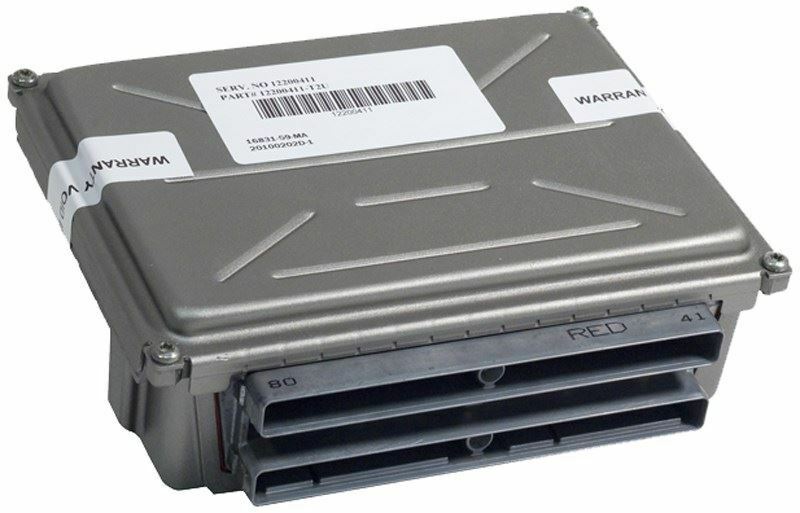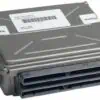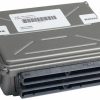Restore Your Engine’s Brain and Reclaim Your Drive
Is your truck or SUV feeling sluggish, unpredictable, or just not itself? A failing Powertrain Control Module (PCM) can be the hidden culprit behind a host of frustrating issues, from a stubborn Check Engine Light to poor fuel economy and erratic shifting. It’s the central command center for your engine’s performance, and when it falters, the entire vehicle suffers. This isn’t just an inconvenience; it’s a matter of reliability and peace of mind. This replacement PCM, part number 12586242, is the definitive solution to restore your vehicle’s intelligence, power, and dependability.
We take the guesswork and dealership hassle out of the equation. Before this module ever leaves our facility, we flash it with the latest official GM software, precisely programmed to your vehicle’s unique Vehicle Identification Number (VIN). This ensures seamless integration and optimal performance from the moment you install it. Get ready to experience a smoother idle, crisper throttle response, and the confidence that comes from a solid, professional-grade repair.
Warning Signs and How to Overcome Them
If you’re noticing any of the following symptoms, it’s a strong indicator that your PCM may be failing. Replacing it can resolve these issues and bring your vehicle back to factory-spec performance.
- ✔ Persistent Check Engine Light (CEL) that won’t go away.
- ✔ Diagnostic Trouble Codes (DTCs) related to internal module failure, such as P0601, P0602, or P0606.
- ✔ Unexplained drops in fuel mileage.
- ✔ Rough or unstable idling.
- ✔ Harsh or delayed transmission shifting.
- ✔ Engine stalling, hesitation, or a complete no-start condition.
- ✔ Communication errors with other vehicle modules.
An Expert’s Note: The Ghost in the Machine
I once had a customer with a 2004 Sierra who had spent months and hundreds of dollars chasing what he called a ‘ghost.’ The truck would randomly stall at stoplights, but never stored a consistent code. He’d replaced sensors, checked wiring, and was at his wit’s end. When he finally brought it to my shop, we hooked up a scope and saw the PCM’s 5-volt reference signal was dropping out intermittently. The module was failing internally, but only under specific conditions. A new, properly programmed PCM fixed it instantly. It’s a powerful reminder that sometimes the ‘brain’ itself is the issue, and a quality replacement is the only true fix.
Guided Installation to Restore Peace of Mind
Installing your new 2004 Escalade ESV PCM is a straightforward process that a confident DIYer can handle. Follow these steps for a successful replacement.
- Safety First: Always begin by disconnecting the negative terminal of your vehicle’s battery to prevent any electrical shorts.
- Locate the Module: On most compatible trucks and SUVs like the Escalade, Sierra, and Tahoe, the PCM is located in the engine bay, on the driver’s side, under or next to the battery tray.
- Disconnect the Harnesses: Carefully release the locking tabs on the electrical connectors and pull them straight out from the module. Avoid pulling on the wires themselves. There are typically multiple color-coded connectors.
- Remove the Old PCM: Unbolt the mounting brackets holding the old PCM in place and carefully lift it out of the vehicle.
- Install the New Unit: Seat your new, pre-programmed PCM into the mounting bracket and secure it with the bolts. Reconnect the electrical harnesses, ensuring they click securely into place.
- Final Steps: Reconnect the negative battery terminal. In many cases, you will need to perform a simple security relearn procedure (often called a ‘key-on, key-off’ cycle) to sync the new PCM with your vehicle’s anti-theft system. This procedure can typically be found in your owner’s manual or online.
Tailored Fit for Your Ride
This module is a direct replacement for service number 12586242 and is compatible with a wide range of 2004 GM vehicles. Please verify your service number or vehicle in the list below to ensure a perfect match. This unit is programmed specifically for your VIN, making it a precise fit for your engine and transmission combination.
- Cadillac: Escalade, Escalade ESV, Escalade EXT
- Chevrolet: Avalanche 1500, Silverado (1500, 2500, 3500), SSR, Suburban (1500, 2500), Tahoe, Trailblazer EXT
- GMC: Envoy XL, Envoy XUV, Sierra (1500, 2500, 3500, Denali), Yukon, Yukon XL (1500, 2500)
- Buick: Rainier (5.3L)
- Hummer: H2
- Isuzu: Ascender (5.3L)
Note: This part is a direct replacement for multiple service numbers, including YFKD, YFKF, YFKH, YFKJ, YFKX, YFXL, YFXM, YFXN, YFXP, and YHTN.
Frequently Asked Questions
Do I need to have this PCM programmed by a dealer?
No, you do not. We handle the programming for you before we ship the part. Simply provide us with your vehicle’s VIN during checkout, and it will arrive ready to install with the latest GM software updates.
What is the security relearn procedure?
The security relearn, or anti-theft relearn, syncs the new PCM to your vehicle’s keys. It’s typically a simple 30-minute procedure involving turning the key to the ‘ON’ position for 10 minutes, then ‘OFF’, and repeating this cycle three times. This allows the components to communicate and authorize the new module.
Where is the PCM located on my 2004 Sierra or Silverado?
For most 2004 GM full-size trucks and SUVs, including the Sierra, Silverado, Tahoe, and your 2004 Escalade ESV PCM, the module is found in the engine compartment on the driver’s side, typically mounted to a bracket underneath the battery.
How do I find my current PCM’s service number?
The service number is printed on a sticker on the case of your existing PCM. It will be a multi-digit number, and matching it to one of the compatible numbers listed (like 12586242, YFKF, etc.) ensures you are ordering the correct hardware.
Will this fix my vehicle’s hard shifting problems?
In many cases, yes. The PCM controls transmission line pressure and shift points. If the module is failing, it can cause erratic or harsh shifting. A correctly programmed replacement can restore smooth transmission operation, provided there are no underlying mechanical issues with the transmission itself.


